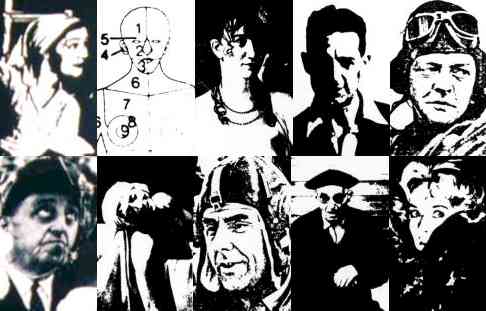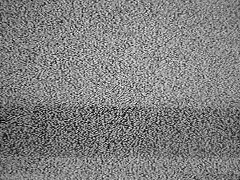
Sunday, August 30, 2009
Saturday, August 29, 2009
Guinea Pig Reminder
1985 - The Devil's Experiment
1985 - Flower of Flesh and Blood
1986 - He Never Dies
1986 - Devil Woman Doctor
1988 - Mermaid in a Manhole
1988 - Android of Notre Dame
1988 - Slaughter Special Za ginipiggu 7: Zansatsu supeshyaru is the seventh and final movie from the series. It works primarily as a "best of" special, showcasing the most gruesome moments from the first several films.
Wednesday, August 19, 2009
The Abyss - Alan Silvestri

01. Main Title
02. Search The Montana
03. The Crane
04. The Manta Ship
05. The Pseudopod
06. The Fight
07. Sub Battle
08. Lindsey Drowns
09. Resurrection
10. Bud’s Big Dive
11. Bud On The Ledge
12. Back On The Air
13. Finale
Tuesday, August 18, 2009
Häxan (1922)
Häxan (English title: The Witches or Witchcraft Through The Ages) is a Swedish/Danish silent film written and directed by Benjamin Christensen. Based partly on Christensen's study of the Malleus Maleficarum, a 15th century German guide for inquisitors, Häxan is a study of how superstition and the misunderstanding of diseases and mental illness could lead to the hysteria of the witch-hunts. The film was made as a documentary but contains dramatized sequences that are comparable to horror films. With Christensen's meticulous recreation of medieval scenes and the lengthy production period, the film was the most expensive Scandinavian silent film ever made, costing nearly two million Swedish krona. Although it won acclaim in Denmark and Sweden, the film was banned in the United States and heavily censored in other countries for what were considered at that time graphic depictions of torture, nudity, and sexual perversion.
Friday, August 14, 2009
The Falls (1980)
 The Falls is a film directed by Peter Greenaway. It was Greenaway's first feature-length film after many years making shorts. It does not have a traditional dramatic narrative; it takes the form of a mock documentary in 92 short parts.
The Falls is a film directed by Peter Greenaway. It was Greenaway's first feature-length film after many years making shorts. It does not have a traditional dramatic narrative; it takes the form of a mock documentary in 92 short parts.The premise of the film is that the world has been struck by a mysterious incident called the "Violent Unknown Event" or VUE, which has killed many people and left a great many survivors suffering from a common set of symptoms: mysterious ailments (some appearing to be mutations of evolving into a bird-like form), dreaming of water (categorised by form, such as Category 1, Flight, or Category 3, Waves) and becoming obsessed with birds and flight. Many of the survivors have been gifted with new languages. They have also stopped aging, making them immortal (barring disease or injury).
A directory of these survivors has been compiled, and The Falls is presented as a film version of an excerpt from that directory, corresponding to the 92 entries for persons whose surnames begin with the letters FALL-. Not all of the 92 entries correspond to a person - some correspond to deleted entries, cross references and other oddities of the administrative process that has produced the directory. One biography concerns two people - the twin brothers Ipson and Pulat Fallari, who are played (in still photographs) by the Brothers Quay.
In addition to the common VUE symptoms mentioned above, a number of themes run through the film. Among these are references to a number of bureaucratic organisations including the VUE Commission and the Bird Facilities Investments (a parody of the British Film Institute), the history of manned flight from Daedalus with the suggestion that birds may be responsible for the VUE (and that the film may thus be seen as a sequel to Hitchcock's The Birds), complex debates over the location of the epicentre of the VUE, and repeated references to Tulse Luper. Luper is a recurring off-stage character in Greenaway's early films, and would eventually appear on film in the epic series The Tulse Luper Suitcases.
Download links:
CD1- 1 2 3 4 5 6 7
CD2- 1 2 3 4 5 6 7

Stille Nacht I (1988)
The Quay Brothers made their first foray into the world of the pop promo in 1986, when they were amongst a number of animators who worked on Peter Gabriel's 'Sledgehammer' video (d. Stephen R. Johnson). Although they had mixed feelings about their contribution, 'Sledgehammer' was one of the most influential videos of its era, and opened up new commissioning possibilities. In 1988, the US-based MTV cable television music network asked several animators to create a number of very short pieces that could be played as an 'Art Break' between the music videos that formed the bulk of the station's output. More...
Wednesday, August 12, 2009
La cabina (1972)
La cabina ("The Telephone Box") is an Emmy award-winning 1972 film directed by Spanish director Antonio Mercero and written by him and José Luis Garci.
In the 35-minute film, a man becomes trapped in a telephone booth, while passersby seem unable to help him. A truck from the telephone company arrives, loads the booth with its trapped occupant onto a truck, and takes it away. When the truck arrives at its destination, the horrified man finds that he has been offloaded into a large room with many phone booths, each one containing a dead person.
This short surreal Spanish film directed by Antonio Mercero is one of those films that you will never forget. The story is simple. A man (played by José Luis López Vázquez) takes his young son to school. On the way home he sees a telephone box with its door slightly ajar, as if it's a Venus fly trap, waiting to snare its victims. He enters the booth and tries to make a call, but he finds the phone is out of order.
When the man entered, the door closed behind him, he tries to open it, he cannot. He struggles inside and tries everything to get out. He shouts at passers-by, who glare at the poor man. They are helpless, too. Then a fireman gets a sledgehammer, and just has he attempts to hit the glass, a phone company truck appears with four men in it, honking its horn as if to say this man is ours, we have caught him.
They then put the telephone box on the back of the truck with the man still inside. They take him on a journey through the streets. While stopped at traffic lights, the man looks at the side and sees another man trapped in a telephone box on the back of a truck, just like him. The journey reaches its conclusion as the truck enters a huge underground factory complex. Inside the building the terror is revealed, as rows and rows of telephone boxes are lined up, each with a dead person inside; one has strangled himself with the phone cord. The man knows his fate is sealed and panic sets in.
The end shot is of the phone company men cleaning the phone box and putting it back in the same location and opening its door slightly ajar again. I first watched this film when I was about eight years-old and it's always stayed with me. I wouldn't go into a phone box for a while afterwards, in fear of being trapped inside.
Download links: 1 2 3 4 5 or 1 2 3 4














